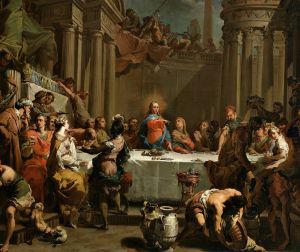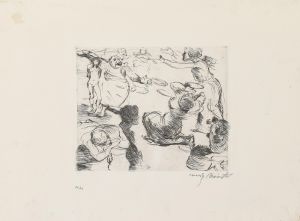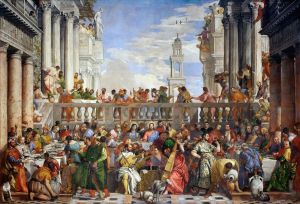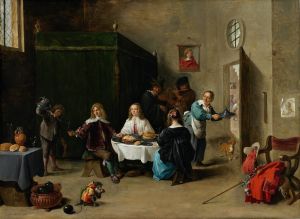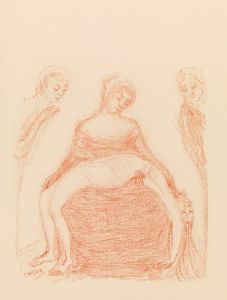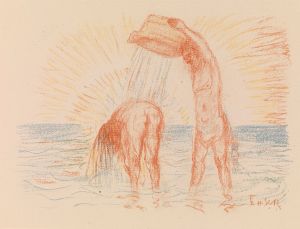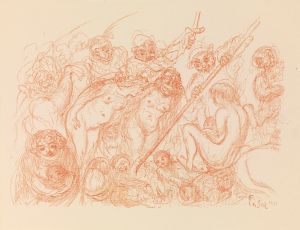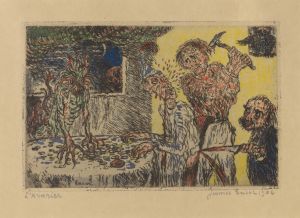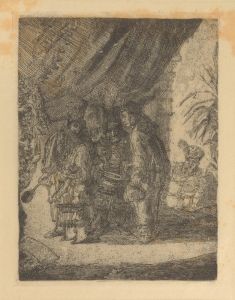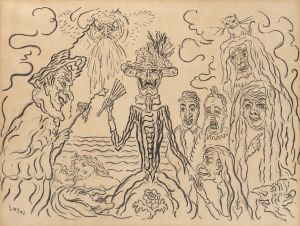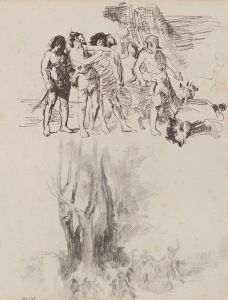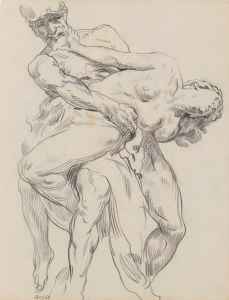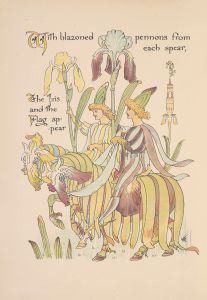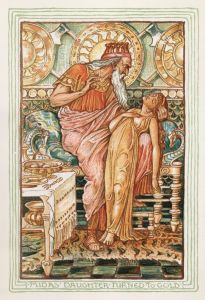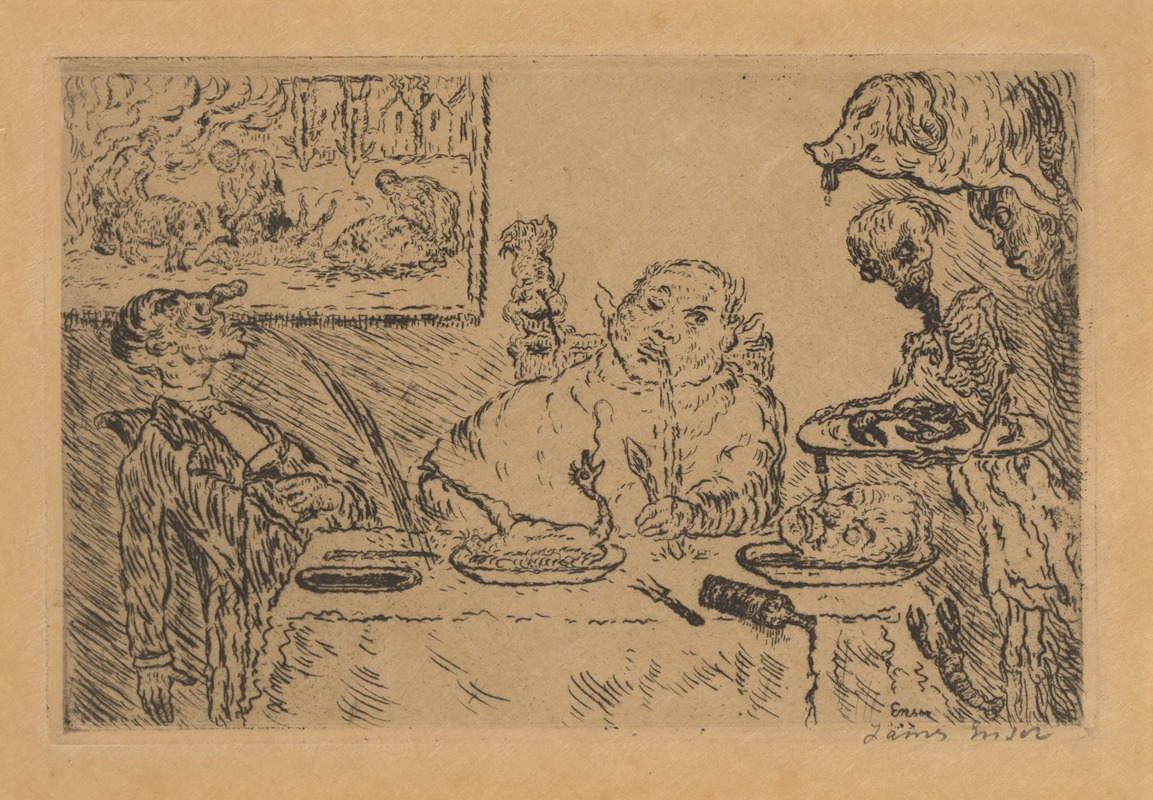
De gulzigheid
A hand-painted replica of James Ensor’s masterpiece De gulzigheid, meticulously crafted by professional artists to capture the true essence of the original. Each piece is created with museum-quality canvas and rare mineral pigments, carefully painted by experienced artists with delicate brushstrokes and rich, layered colors to perfectly recreate the texture of the original artwork. Unlike machine-printed reproductions, this hand-painted version brings the painting to life, infused with the artist’s emotions and skill in every stroke. Whether for personal collection or home decoration, it instantly elevates the artistic atmosphere of any space.
James Ensor, a prominent Belgian painter and printmaker, is known for his unique and often provocative works that blend elements of symbolism, expressionism, and surrealism. One of his notable paintings is "De gulzigheid," which translates to "The Gluttony" in English. This painting is part of Ensor's broader exploration of human vices and societal critiques, themes that frequently appear in his oeuvre.
Ensor was born in 1860 in Ostend, Belgium, and spent most of his life there. His early works were influenced by the academic art traditions, but he soon developed a distinctive style characterized by vivid colors, grotesque imagery, and a satirical approach to contemporary society. "De gulzigheid" exemplifies these characteristics, showcasing Ensor's ability to blend the macabre with the whimsical.
"The Gluttony" is a striking example of Ensor's fascination with the grotesque and the absurd. The painting depicts a chaotic scene filled with exaggerated figures indulging in excessive eating and drinking. The composition is crowded, with each character seemingly engaged in their own gluttonous behavior, creating a sense of disorder and excess. Ensor's use of bright, almost garish colors, and his loose, expressive brushwork contribute to the overall sense of frenzy and decadence.
Ensor's choice of subject matter in "De gulzigheid" reflects his critical view of human nature and society. Gluttony, one of the seven deadly sins, is portrayed here not just as an individual failing but as a societal epidemic. The figures in the painting are often grotesque and caricatured, emphasizing the moral and physical corruption associated with their behavior. This approach is consistent with Ensor's broader body of work, which frequently includes satirical and critical depictions of contemporary society, religious hypocrisy, and human folly.
The painting also demonstrates Ensor's interest in masks and theatricality, elements that recur throughout his work. Many of the figures in "De gulzigheid" appear to be wearing masks or have mask-like faces, blurring the line between reality and performance. This motif can be interpreted as a commentary on the performative nature of social behavior and the hidden, often ugly, truths behind societal facades.
James Ensor's work, including "De gulzigheid," had a significant impact on the development of modern art. His bold use of color, unconventional subject matter, and innovative techniques influenced later movements such as expressionism and surrealism. Ensor's ability to combine humor, horror, and social critique in his paintings has earned him a lasting place in the history of art.
In summary, "De gulzigheid" by James Ensor is a vivid and provocative painting that exemplifies the artist's unique style and critical perspective on human nature and society. Through its chaotic composition, grotesque figures, and satirical tone, the painting offers a powerful commentary on the vice of gluttony and the broader moral failings of society. Ensor's work continues to be celebrated for its originality, boldness, and enduring relevance.





